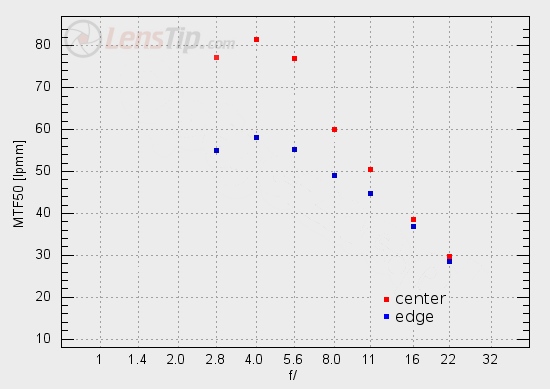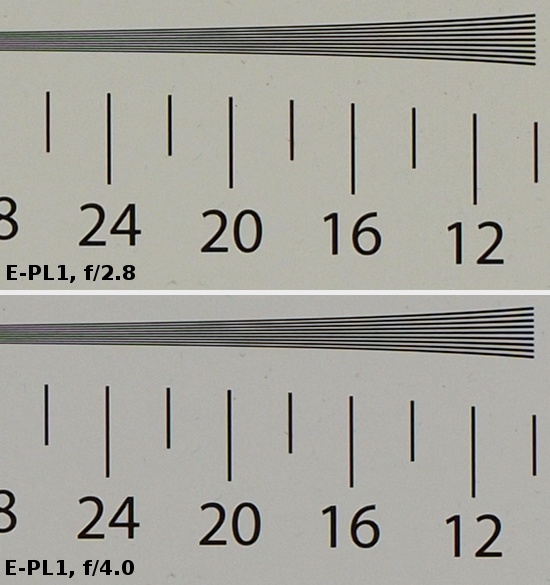Olympus M.Zuiko Digital 60 mm f/2.8 ED Macro
4. Image resolution
Let’s glance at the graph below and check how the tested lens compare in the frame center and on its edge as well.

Please Support UsIf you enjoy our reviews and articles, and you want us to continue our work please, support our website by donating through PayPal. The funds are going to be used for paying our editorial team, renting servers, and equipping our testing studio; only that way we will be able to continue providing you interesting content for free. |
- - - - - - - - - - - - - - - - - - - - - - - - - - - - - - - - - - - - - - - - - - - - - - - -
When it comes to the frame centre, the Olympus deserves only praise and it is rather important praise. Already at the maximum relative aperture the image is exceptionally sharp – the result reached there brushes against a very high value of 78 lpmm. On stopping down the aperture by 1 EV makes these values increase to a near record level of 81 lpmm. Beautiful!
When it comes to the edge of the frame you can’t have any serious reservations either. Even at the maximum relative aperture the image quality is good and it’s improving on further stopping down. The fact that there is a big difference between the results you get in the center and on the edge is interesting though. With such a small detector and a lens of this type I wouldn’t have expected a difference that big. You can consult our tests of the Sigmas 150 mm f/2.8 OS Macro and the 180 mm f/2.8 OS Macro. They are both macro devices with long focal lengths but they are designed to work on a very demanding full frame. It is very interesting that, in their case, the difference between the centre and the edge of the frame is very slight whereas the results of the Olympus are so wide apart, although it works with a sensor two times smaller.
It is difficult to say unambiguously what is the reason of such a performance but we have some suspicions – they concern very narrow tube of the Olympus. Miniaturization in optics more often than not entails some serious compromises and perhaps we are dealing here with such a situation. You get a handy, physically light and a bit narrow lens which is able to generate outstandingly sharp images in the frame centre – a bit worse (but nowhere really bad) performance on the edge of the sensor is the price you have to pay for. We are able to understand such an approach.
Below you can see our resolution testing chart crops, taken from JPEG files. You should remember that the E-PL1, like many other Olympus cameras, sharpens the image quite significantly even if you choose the lowest sharpening level.
 |






